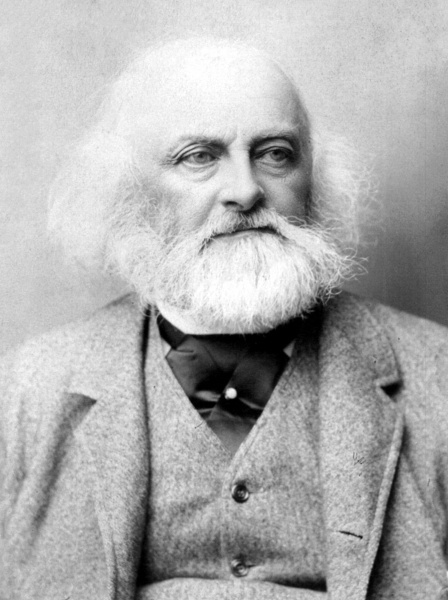150 years of the most famous of the first photos of the moon

Lewis Morris Rutherford, 1816 - 1892
Today we are looking at photos of Mars , the dwarf planet Ceres, or a view of the Earth through the rings of Saturn with restrained interest. It seems that a long time ago everyone found their home on satellite images . Amateur astronomers look at the sky, photograph celestial bodies, and make beautiful time-lapses that show the Milky Way.
The current generation no longer knows what a photographic film is and has never seen a Polaroid camera that gave out snapshots. Sometimes, when they come to visit, they pretend that they are interested in viewing an album of yellowed photos. And do daily selfies with dakfeysami.
')
But once the photograph itself was a technical miracle so uncommon that only a small part of the people saw the photograph - especially, it was photographed. And although the night sky is still fraught with many mysteries, then it was investigated much less.
At the beginning of the 19th century, Lewis Morris Rutherford was born in the estate of Morrisana (New York). The boy was born lucky in an aristocratic family. Still, his father grandfather was an American senator. And the great-grandfather of his mother, Lewis Morris, in whose honor the boy was named, was generally one of those who signed his name on the Declaration of Independence! And the name of the estate came from just this noble family. Now it is - just a district in the south of the Bronx.
Therefore, he went to study for the prestigious legal profession in a good educational institution Williams College. And after finishing, he went through practice and entered the service in the specialty in the city of Auburn (which in American style means “golden chestnut”) of the state of New York. The city was, though small, but advanced. For example, at the end of the 19th century, the world's first execution with an electric chair took place here. And it is not known whether this event is somehow connected with the fact that in the same city the heavy metal band Manowar was formed much later - but the fact remains.
But Rutherford had one passion - science. More precisely, astronomy. He was always interested in the starry sky and its secrets. Therefore, the benefit of his family was quite wealthy, at 33, he left the boring business of a lawyer, and decided to devote his life to science. And very, I must say, succeeded in this. I did the first work in the field of spectral analysis. Conducted experiments in astrophotography. He invented a micrometer for photographs, a machine for making diffraction gratings, and the first telescope specifically designed for astrophotography.
And thanks to his instruments he made many first photographs of the Sun, the Moon, various stars, nebulae and clusters up to the fifth magnitude. In addition, he was able to discern that the stars are divided into different spectral classes. The photographs of the Pleiades, obtained by him with the help of a specially made lens, for the first time allowed the use of photography in measuring astronomy. So much so that he became one of the founders of the National Academy of Sciences of the United States - the main American scientific organization.
We remember this scientist and inventor because on March 6, 1865, that is, 150 years ago, he made a wonderful (and one of the first) photograph of the Moon. Richard Proctor, a popularizer of science in the 19th century, called Rutherford "the greatest photographer of the moon of our time."

That same photo of the moon on March 6, 1865, which fell into the book of the famous physicist, chemist and photochemist Herman Wilhelm Vogel
Here are some of his works:

"The Moon in the First Quarter", March 4, 1865

Pleiades

More moon

Stereo photo cards for which his photos were used

And the tomb of the scientist
Source: https://habr.com/ru/post/377151/
All Articles